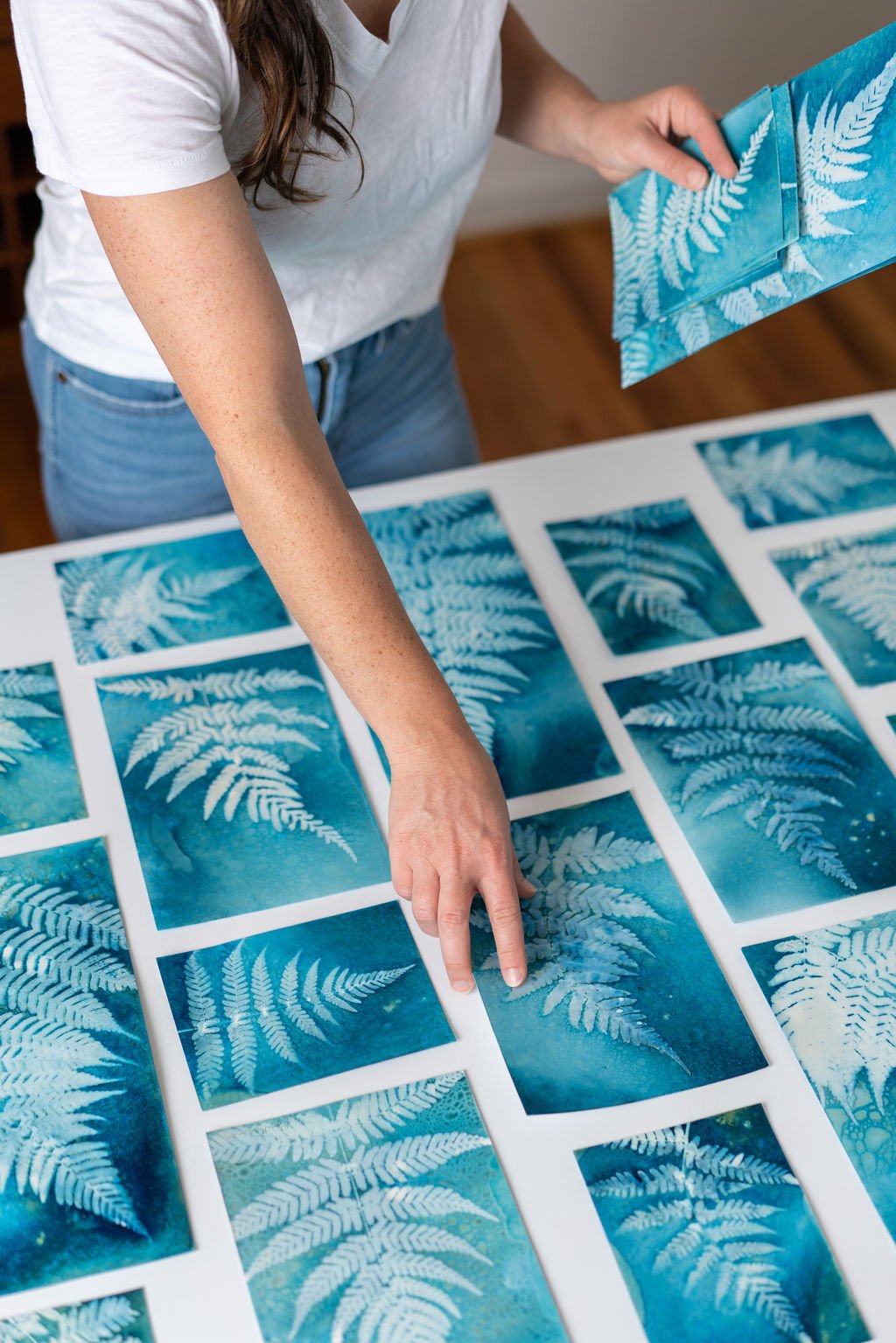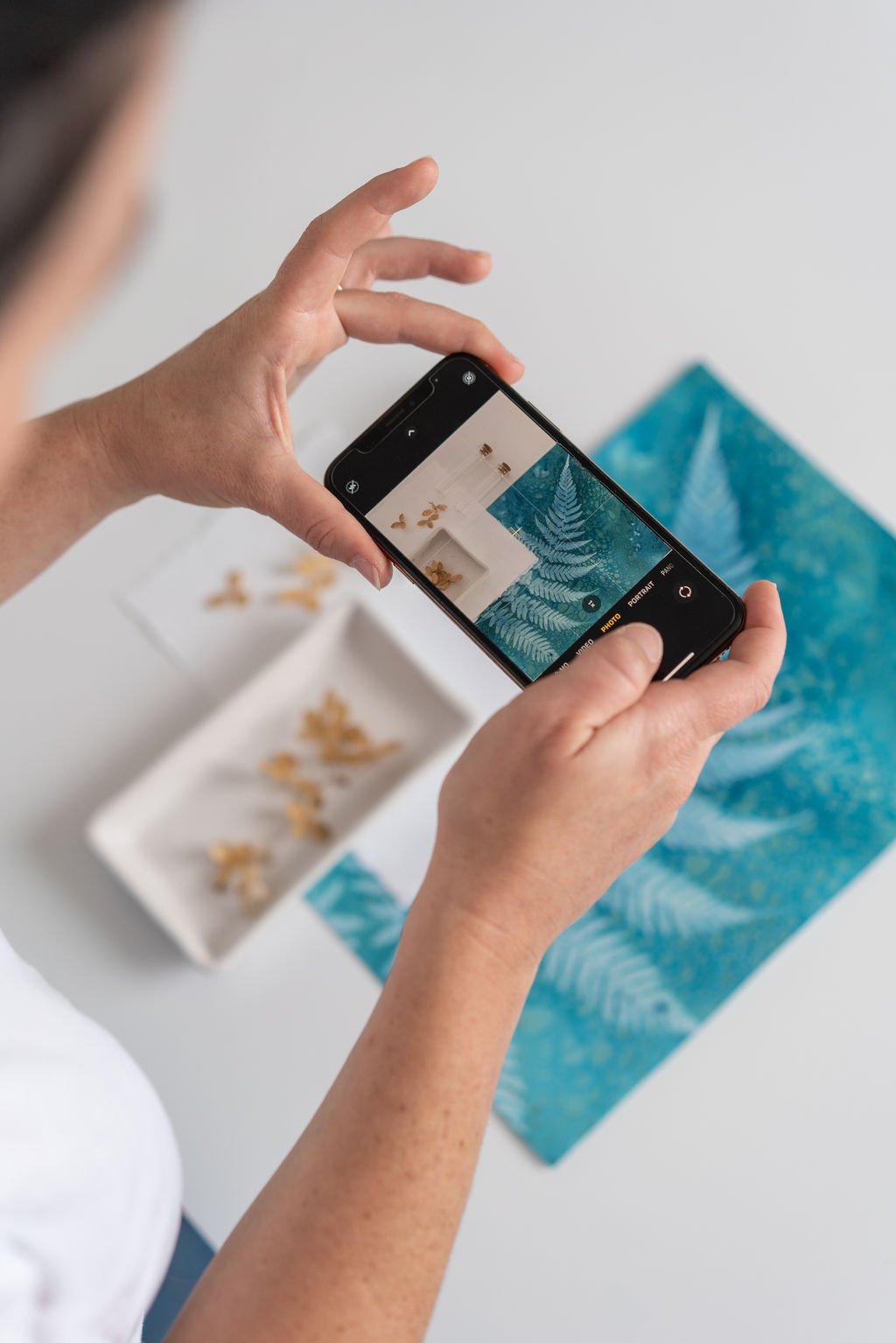

Beauty, in its most authentic form, is found in nature. Each piece in my fern cyanotype collection is made using a unique fern leaf. The collection highlights nature’s intentionally imperfect beauty.






“We do not know one thousandth of one percent of what nature has revealed to us”
— Albert Einstein
I love greenery almost more than flowers, especially ferns. Each leaf brings symmetry and mathematical consistency with a little sprinkle of nature’s imperfect perfection. They are almost the snowflakes of the summer.
To capture this, I chose to use the wet cyanotype process instead of the standard cyanotype process because no result is ever the same. It does not only capture the shape of the leaf itself, but constructs a unique background around the leaf each time.
This collection really digs deep into my desire to bring the outside world inside, to the spaces where we spend the most time. I hope you find each of these pieces as endlessly interesting as I do.
What is a cyanotype?
Cyanotyping is the technology behind the original blueprint.
Iron salts (potassium ferricyanide and ferric ammonium citrate) are used to coat paper in a darkroom setting and allowed to dry. When this coated paper is exposed to UV light, it turns dark blue.
Objects, such as plants, can be placed over the paper to block the UV light, allowing white space to remain on the paper. A finish cyanotype is rinsed in a bath to set the image.
The emulsion can be mildly altered in a process known as ‘wet cyanotypes’. Once the emulsion has dried, but before exposing the paper to UV rays, water, vinegar, salt, bubbles, and other household items can be added in addition to the subject matter. This is the process used to create the fern cyanotypes.









